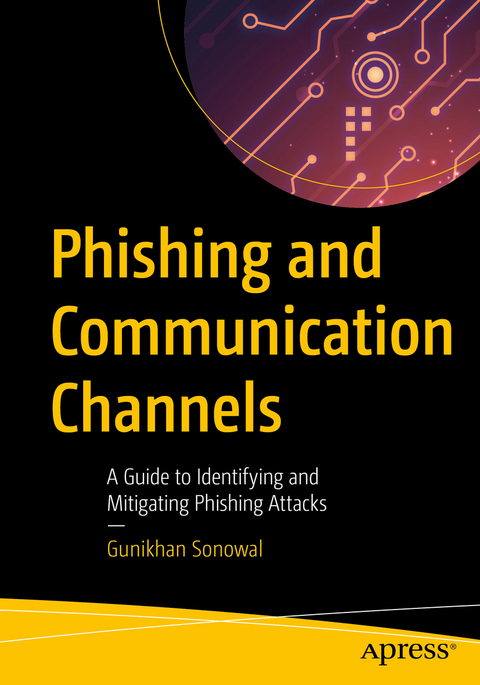
Phishing and Communication Channels
Apress (Verlag)
978-1-4842-7743-0 (ISBN)
The aim of phishing is to fraudulently obtain sensitive credentials such as passwords, usernames, or social security numbers by impersonating a trustworthy entity in a digital communication.
Phishing attacks have increased exponentially in recent years, and target all categories of web users, leading to huge financial losses to consumers and businesses. According to Verizon’s 2020 Data Breach Investigations Report (DBIR), 22% of all breaches in 2019 involved phishing. And 65% of organizations in the USA experience a successful phishing attack.
This book discusses the various forms of phishing attacks, the communications most often used to carry out attacks, the devices used in the attacks, and the methods used to protect individuals and organizations fromphishing attacks.
What You Will Learn
Understand various forms of phishing attacks, including deceptive, DNS-based, search engine, and contents injection phishing
Know which communications are most commonly used, including email, SMS, voice, blog, wifi, and more
Be familiar with phishing kits (what they are) and how security experts utilize them to improve user awareness
Be aware of the techniques that attackers most commonly use to request information
Master the best solutions (including educational, legal, technical) to protect against phishing attacks
Who This Book Is For
Security professionals who need to educate online users, especially those who deal with banks, online stores, payment systems, governments organizations, social networks and blogs, IT companies, telecommunications companies, and others. Thesecondary audience includes researchers working to develop novel strategies to fight against phishing activities and undergraduate and graduate instructors of cybersecurity.
Dr. Gunikhan Sonowal is an Assistant Professor in the Department of Computer Science and Engineering at KL University. His research interests include information security (phishing) and accessibility computing. He received his Bachelor of Science degree (BSc) from Sibsagar College, a Master of Computer Application (MCA) at University of Hyderabad, India, and a PhD in computer science and engineering from Pondicherry University. He has published eight research papers in peer-reviewed journals and international conferences.
1: Introduction to Phishing.- 2: Types of Phishing.- 3: Communication Channels.- 4: What Does a Phishing URL Look Like?.- 5: Characteristics of a Phishing Website.- 6: Phishing Kits.- 7: Training Methods for Phishing Detection.- 8: Legal Solution: Phishing is Prohibited Under a Number of Laws.- 9: Phishing Detection Based on Technology.- Appendix A: Machine Learning Algorithms.- Appendix B: Deep Learning Algorithms.- Appendix C: Natural Language Processing (NLP).- Appendix D: Evaluation Metrics for Phishing Detection Approaches.
“It covers a wide range of topics. … Each chapter tackles a very different angle on phishing, which means the topics are covered in a succinct, telegraphic way: many concepts are presented as one or two paragraphs, very often fitting several of them on the same page. … The intended audience is intermediate; experts in different areas of computing will benefit from reading about their respective interests, but the book assumes an introductory to intermediate level throughout.” (Gunnar Wolf, Computing Reviews, January 12, 2023)
| Erscheinungsdatum | 20.12.2021 |
|---|---|
| Zusatzinfo | 71 Illustrations, black and white; XVII, 220 p. 71 illus. |
| Verlagsort | Berkley |
| Sprache | englisch |
| Maße | 178 x 254 mm |
| Themenwelt | Informatik ► Netzwerke ► Sicherheit / Firewall |
| Schlagworte | Content-Injection Phishing • Cyber Attack • DNS-based phishing • Information Security • Man-in-the-middle attacks • Pharming attack • Phishing • Search engine phishing • Smishing (sms phishing) • social engineering attack • Spear Phishing • Vishing(voice phishing) • whaling |
| ISBN-10 | 1-4842-7743-0 / 1484277430 |
| ISBN-13 | 978-1-4842-7743-0 / 9781484277430 |
| Zustand | Neuware |
| Haben Sie eine Frage zum Produkt? |
aus dem Bereich


